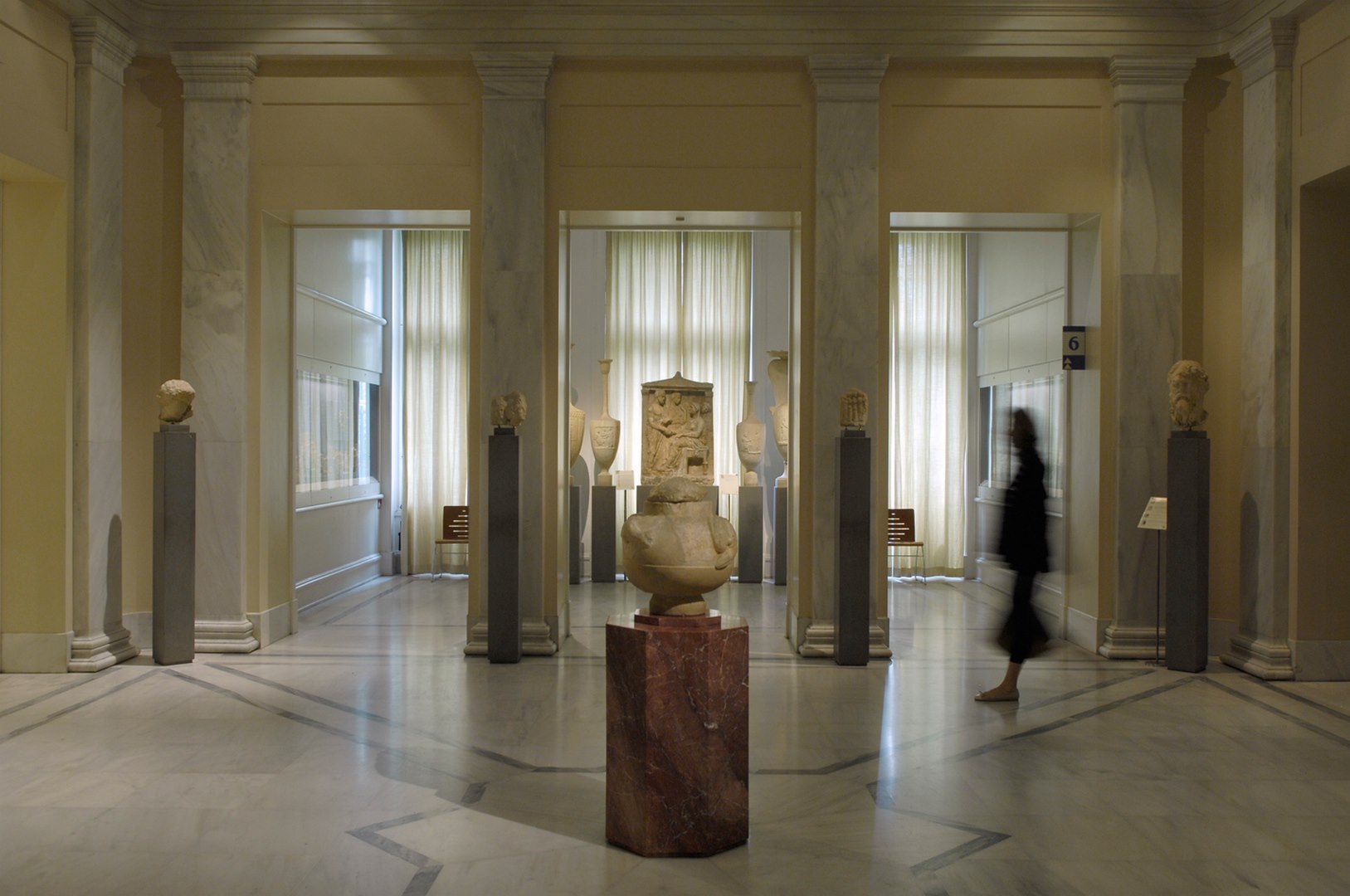Discovering the long and fascinating history of the Greek Culture
The multi-dynamic Pireos Street Cultural Centre is an industrial building of the 1960’s transformed into a modern museum space, which includes a central atrium, a 400-seat amphitheatre, designed to accommodate multiple events and an exhibition-halls span of 3,000 m2. The Cultural Centre is equipped with the latest technological specifications, in order to serve simultaneously the most complex organizational needs, when hosting cultural events and exhibitions that relate to art, music, dance, theatre, film and various conferences.
The centerpiece of the Benaki Museum, it aims to present the historical and cultural development of Hellenism within its geographical and evolutionary context, from prehistory to the present. The priceless collections housed in this building depict masterpieces from the Neolithic Age, the Antiquity and the Roman Era to the Byzantine Age, and from the fall of Constantinople, the period of Frankish rule and the Ottoman Occupation, to the outbreak of the Greek War of Independence in 1821. The collections also include works of art from the time of the formation of the Modern Greek State until the Asia Minor Catastrophe in 1922.
The building at 3 Kriezotou Street, where Nikos Hadjikyriakos-Ghika (1906-1994) lived and worked for forty years, was a gift from him to the Benaki Museum. The ground floor to the third floor of the building showcase the intellectual and artistic creation of Greece in a particularly critical time, from the end of World War I and the Asia Minor Catastrophe until the eve of the dictatorship in 1967, which also constitutes the climate in which Nikos Hadjikyriakos-Ghikas lived and developed his artistic perceptions. Artistic creation (painting, sculpture, printmaking, music, theatre, cinema, photography) meets architecture, the art of writing (prose, poetry, literature, criticism), and also historical and philosophical thought.
The Islamic Art collections of the Benaki Museum are exhibited in the Museum of Islamic Art and ranks among the most important in the world. Antonis Benakis initially started collecting in Egypt at the beginning of the 20th century when at the same time many similar collections were created in Europe and America, which, in many cases, complement the Benaki Museum collection. The building which houses these collections is located in the historic centre of Athens, near the ancient Kerameikos cemetery. During the preservation works of the building, a section of the ancient city wall of Athens was uncovered at the basement level; it is now accessible to visitors. The evolution of Islamic civilisation from the first appearance of Islam up to the Ottoman period and the corresponding development of Islamic art up to the 19th century are demonstrated by more than 8,000 works of art, including ceramics, gold, metalwork, textiles and glass, smaller groupings of bone objects, inscribed funerary steles and weaponry, as well as the marble-faced interior of a reception room from a 17th-century Cairo mansion.
- 1, Koumbari St. & Vas. Sofias Avenue, Athens
- 22, Asomaton & 12 Dipilou Str., 10553, Athens
- 3, Kriezotou Str., Athens
- 138, Pireos Ave. & Andronikou Str., Piraeus
Show your ISIC and get the student ticket.


